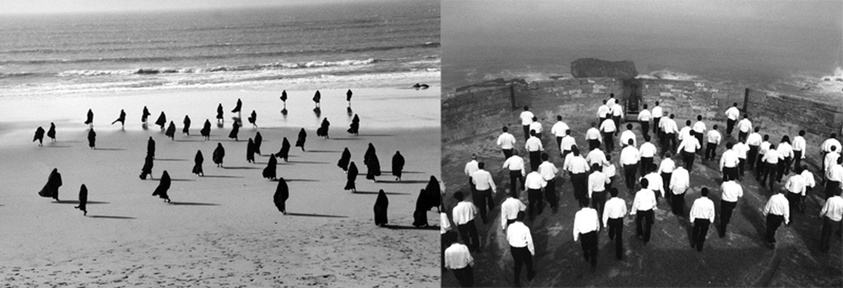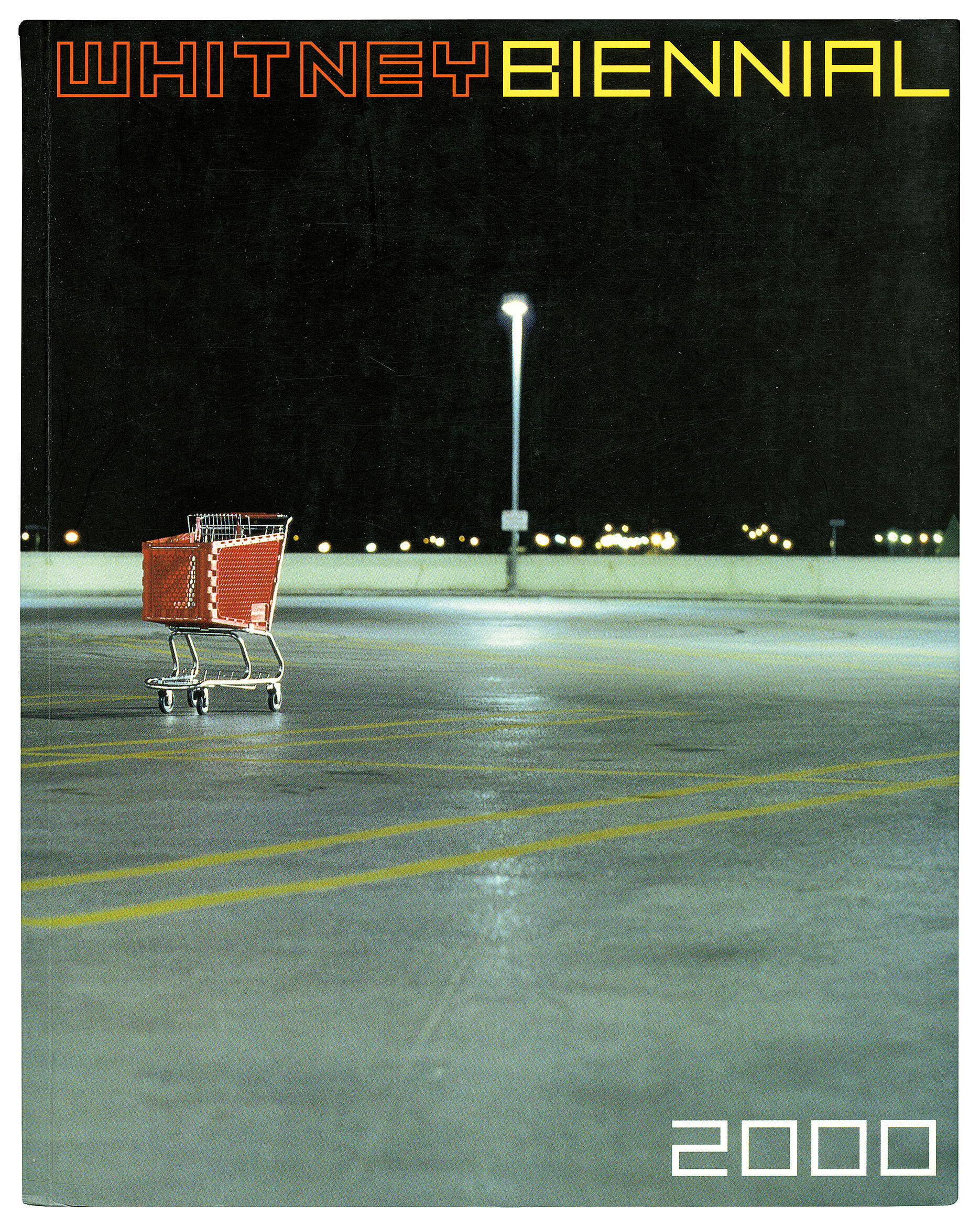Rapture is a two-screen, black-and-white video projection in which an allegorical narrative concerning the differences between Muslim men and women unfolds on facing walls. Shirin Neshat, whose work in photography and film explores the social and cultural role of women in the Islamic world, shot this work in Morocco with a cast of hundreds. Against an evocative soundtrack, each group engages in a separate set of actions: the identically-dressed men, first seen in a fortress, perform elaborate rituals and mundane activities, while the veiled women, crossing a desert, act out less tightly prescribed movements and gestures. Neshat’s now gendered spaces suggest ready associations (woman=nature, man=culture) as well as contrasts—the men are symbolically entrenched in the tradition and authority of Islam, while the women are both protected and imprisoned by their traditional black veils, or chadors. As the video progresses, the clear oppositions that Rapture seems, initially, to express soon give way to implications as multivalent as the chador itself. At the conclusion, when six women board a rowboat and set off across an open sea, their destination—whether freedom, redemption, or martyrdom—is left undefined. Neshat sees the ending as a testament to the women’s adventurousness: “In opposition to the men, who stay within their inner boundaries, the women become very brave.”
Not on view
Date
1999
Classification
Installations
Medium
Two-channel video installation, black-and-white, sound, 13 min.
Dimensions
Dimensions variable
Accession number
99.86
Edition
AP 1/2 | Ed. 5
Credit line
Whitney Museum of American Art, New York; purchase, with funds from the Painting and Sculpture Committee and the Film and Video Committee
Rights and reproductions
© Shirin Neshat


